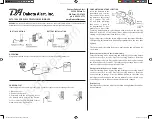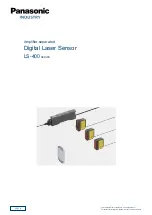
15
TTL/Auto Exposure Position
(Fig.2) Shows the mode switch in the TTL (Thru-the-Lens) / auto
exposure position. From the OFF position, rotate the switch clockwise
to access the TTL/auto exposure setting; the white indicator on the
knob aligns with TTL. When taking pictures with the mode switch in
this position, the camera automatically signals the strobe to turn off
when the exposure is correct.
•
When the DS51 is connected directly to the camera, the camera
must feature compatible TTL/auto exposure to utilize this mode.
Manual Exposure Position
(Fig. 3) shows the mode switch in the manual exposure mode with the
DS51 Strobe turned to the F (full power) position. Rotate the mode
switch clockwise to access the different power settings. Each power
setting clockwise from F reduces the light output of the DS51 Strobe
in one-half f-stop increments. When shooting in the manual mode,
it is suggested that you start the strobe at full power and adjust the
camera’s aperture based on the strobe-to-subject distance.
If the subject in the photo is underexposed (dark) you must move
closer to the subject. If the subject is overexposed (light), then you
can rotate the mode switch clockwise to reduce the light output of the
strobe until the desired exposure is obtained. The DS51 provides five
reductions in power in one-half f-stop increments from the full power
setting. (Fig.4) for example, shows the mode switch set to -1 and 1/2
f-stops.
Do not use manual strobe settings with a camera that emits “pre-
flash.” Leave the DS51 in the TTL position and adjust exposure
using your camera settings or housing conversion circuitry (if
applicable).










































